Don’t give up on pincushions just because you think you live in the wrong place!

Hybrids and cultivars of our indigenous pincushions are grown the world over for the cut-flower trade, and are probably one of the most distinctive and recognised flowers on the planet. In South Africa, where they hail from, you will find pincushions in flower from July to November.
Species like Leucospermum cordifolium, L. tottum, L. reflexum, L. lineare and L. glabrum have been widely crossed with each other and a wide range of modern hybrids and cultivars grown from healthy cuttings are available for the home gardener to plant.
Because pincushions are part of the Cape fynbos floral kingdom there might be a perception that they are temperamental and difficult to grow in other provinces. This is not true, because they fare very well elsewhere, including in other rainfall climates, and once established can even tolerate a little frost. The secret lies in how they are planted and cared for.
General growth requirements
In their natural habitat these members of the Proteaceae family will grow in sandy, nutrient-poor, soil with a low pH between 5 and 6. They have a general preference for dry, hot summers and cold, wet winters. But don’t allow this to put you off as they can be grown quite successfully as long as you make a few tweaks:
Position
Full sun (at least six hours of sunlight) is needed for good flower production. Even light shade will cause leggy growth and no flowers.
The soil
Although some varieties can tolerate clay soil, it is best to pay special attention to good drainage.
This story is from the {{IssueName}} edition of {{MagazineName}}.
Start your 7-day Magzter GOLD free trial to access thousands of curated premium stories, and 9,000+ magazines and newspapers.
Already a subscriber ? Sign In
This story is from the {{IssueName}} edition of {{MagazineName}}.
Start your 7-day Magzter GOLD free trial to access thousands of curated premium stories, and 9,000+ magazines and newspapers.
Already a subscriber? Sign In

Fixing things in 2025!
One should start a new year by sitting firmly on one's throne, not breaking it and falling off!
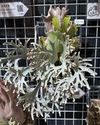
Silver staghorn ferns at platinum prices
When we think of a staghorn fern, Platycerium bifurcatum, which can be found in many South African gardens, usually comes to mind.
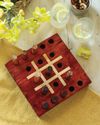
Tic Tac Toe
Keep children (and adults) busy for hours with this stylish game for the patio.
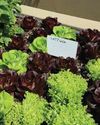
Let's change the way we think about food
Healthy food is all about preparing fresh ingredients in the simplest (yet tasty) way. Today's balanced diet includes lots of fiber, plenty of fruits and vegetables, and proteins in the form of meat, like lean pork. Keep it interesting, and you can't go wrong.

Grow Wayne's favourite things
Midsummer is when your garden is at its lushest. It's always playtime in the garden, and whether it's lying under a tree or finding more stuff to grow, gardens are our safe space for self-expression and joy.

THE BEST OF SUMMER
Summer annuals offer more than just colour, texture, and variety in a garden.
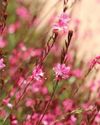
PLANT A COLOUR explosion!
Angelic angel wings and a dwarf morning glory can keep colour all around you from spring to autumn, and will be back to do it all over again next year...
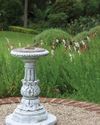
SAVING TIME in the garden
Just like Jamie Oliver can teach us to cook a meal in 15 minutes, there are ways to garden in 15 minutes or less. Here are some of our top time-saving tips to make gardening easier, quicker and more fun.

FUN PROJECTS for the New Year!
If you want a wow factor for your next party, try revamping a piece of driftwood into something amazing with these few steps.

Evolving for LONGEVITY
A continuously transforming garden has longevity, which is certainly true for the garden at Brahman Hills in the Midlands of KwaZulu-Natal.